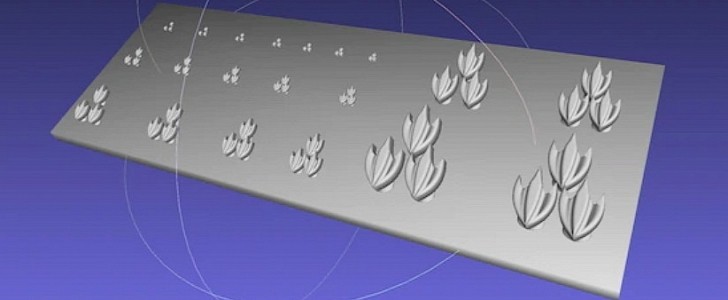It's no secret that the U.S. Navy has been developing and experimenting with various types of unmanned underwater vehicles (UUVs) for many years. Nowadays, these devices can operate in extreme depths while being at the same time a low-cost alternative capable of carrying various types of missions. As technology is advancing, so are the techniques used for building the UUVs adopted by the military.
According to a Navy press release issued on Thursday, May 6th, Nicole Xu, a U.S. Naval Research Laboratory (NRL) postdoctoral research associate, is designing "bioinspired shark skin-like surfaces" that could help the U.S. Navy UUVs move quicker and become more energy efficient.
You might wonder what exactly shark skin has to do with faster propulsion. Well, Xu explains that the skin is made of a matrix of tiny, hard, tooth-like structures called dermal denticles that could contribute to fast and stealthy swimming by turbulent drag reduction.
Xu's goal is to test these bioinspired surfaces on hydrofoils inside water tunnels before implementing the skins onto UUVs, such as the NRL-developed Wrasse-inspired Agile Near-shore Deformable-fin Automaton (WANDA), a fish-inspired vehicle that uses four controlled robotic fins.
From there, it'll be a matter of time until things take off and get integrated into other traditional unmanned devices used by the military. Currently, Xu is testing 3D printing capabilities and designing the foils to conduct the initial experiments in a water tunnel.
Earlier this year, the Department of the Navy released a document for acquiring and developing UUVs that will play key roles in U.S. naval operations. The NRL's latest project could be used in numerous combat missions such as surveillance, reconnaissance, mine countermeasures, and submarine warfare as the Navy seeks to develop new concepts of service, new ways of combining autonomous and manned warships, and new technologies made possible by these advancements.
You might wonder what exactly shark skin has to do with faster propulsion. Well, Xu explains that the skin is made of a matrix of tiny, hard, tooth-like structures called dermal denticles that could contribute to fast and stealthy swimming by turbulent drag reduction.
Xu's goal is to test these bioinspired surfaces on hydrofoils inside water tunnels before implementing the skins onto UUVs, such as the NRL-developed Wrasse-inspired Agile Near-shore Deformable-fin Automaton (WANDA), a fish-inspired vehicle that uses four controlled robotic fins.
From there, it'll be a matter of time until things take off and get integrated into other traditional unmanned devices used by the military. Currently, Xu is testing 3D printing capabilities and designing the foils to conduct the initial experiments in a water tunnel.
Earlier this year, the Department of the Navy released a document for acquiring and developing UUVs that will play key roles in U.S. naval operations. The NRL's latest project could be used in numerous combat missions such as surveillance, reconnaissance, mine countermeasures, and submarine warfare as the Navy seeks to develop new concepts of service, new ways of combining autonomous and manned warships, and new technologies made possible by these advancements.

